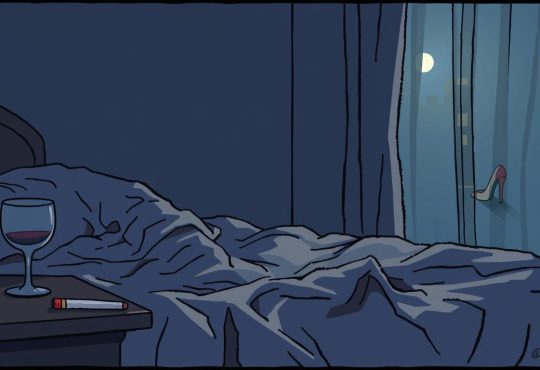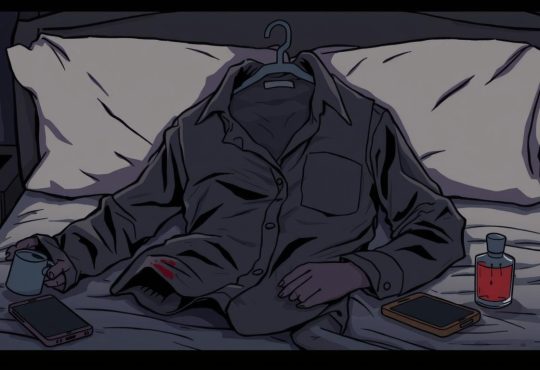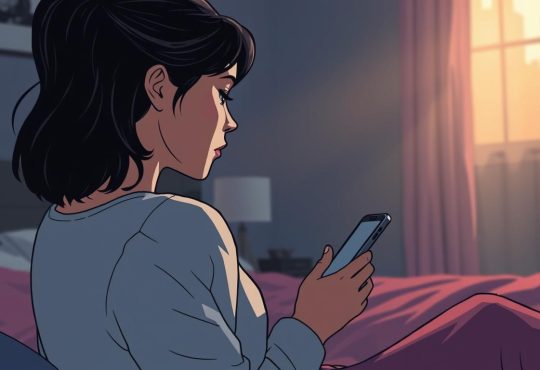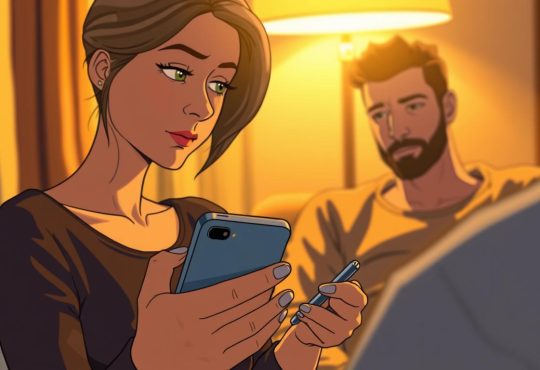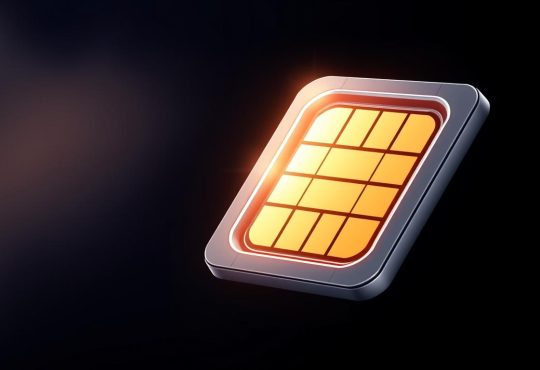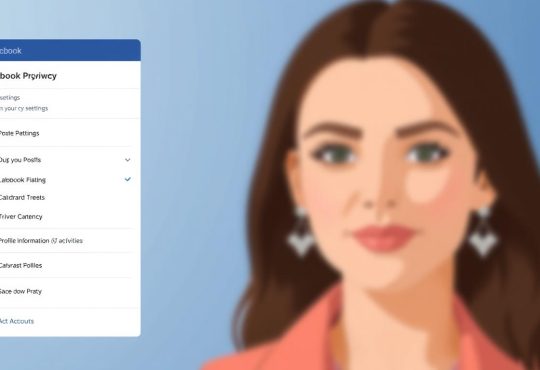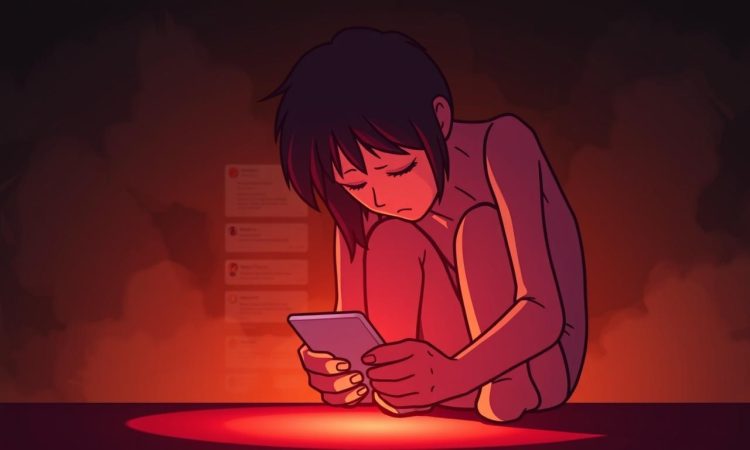
Have you ever wondered why someone would block you on social media after a breakup? It’s a question that leaves many people searching for answers. Understanding the reasons behind this action can help bring clarity during a confusing time.
Research shows that 37% of teens block their exes on platforms like Instagram. This behavior often stems from emotional pain, avoidant tendencies, or even a desire for revenge. Seeing a former partner’s profile can trigger feelings that are hard to process.
In this article, we’ll explore the psychological and behavioral reasons behind this decision. From personal insights to research-based evidence, we’ll break down each factor in an approachable way. Whether it’s about social media mechanics or emotional healing, we’ve got you covered.
On this Page:
- 1 Understanding Social Media Blocking After a Breakup
- 2 Avoidant Programming and Other Emotional Factors in Blocking
- 3 When Seeing Your Ex Becomes Painful
- 4 My Ex Blocked Me on Instagram: What It Means
- 5 Anger, Revenge, and Patterns of Habitual Blocking
- 6 Social Media vs. Phone Blocking: Differing Levels of Intimacy
- 7 Effective Strategies for Moving On and Regaining Confidence
- 8 Conclusion
Understanding Social Media Blocking After a Breakup
The decision to block someone post-breakup is rarely simple or one-dimensional. It often stems from a mix of logical reasoning and emotional triggers. Social media platforms can intensify feelings, making it harder to move on.
One common reason for blocking is to avoid constant reminders of the past relationship. Seeing updates or photos can reopen emotional wounds. This behavior is often a self-protective measure, driven by inner fears or unresolved feelings.
Exploring the Reasons Behind the Block
Blocking can serve as a way to eliminate unwanted contact. It creates a digital boundary, preventing messages or interactions that might lead to conflict. For some, it’s a step toward emotional recovery, allowing space to heal.
Another factor is the role of algorithms. Social media platforms often push content from people we’ve interacted with, making it hard to avoid seeing updates. Blocking ensures that these reminders don’t disrupt the healing process.
The Role of Breakup Emotions on Social Media Behavior
Emotions like hurt, anger, or sadness often drive the decision to block. These feelings can make it difficult to maintain a digital connection. Blocking becomes a way to regain control and focus on personal growth.
Societal expectations also play a role. Many believe that cutting ties with an ex is necessary for moving on. This mindset influences behavior, making blocking a common post-breakup strategy.
Ultimately, understanding the reasons behind blocking requires looking at both logic and emotion. It’s a complex behavior shaped by personal experiences and societal norms.
Avoidant Programming and Other Emotional Factors in Blocking
Avoidant tendencies play a significant role in post-breakup behavior. These tendencies are often rooted in a fear of closeness or abandonment. For some, blocking on social media becomes a way to create emotional distance and protect themselves from unresolved feelings.
Core wounds from past experiences can also influence this behavior. When someone feels vulnerable, removing a presence on social media serves as a safety mechanism. It’s less about punishment and more about self-preservation.
Understanding Avoidant Behavior and Core Wounds
Avoidant programming is a psychological response to fear. It’s driven by a desire to maintain independence and avoid emotional pain. Research shows that those with avoidant tendencies often struggle with intimacy, leading to actions like blocking.
Core wounds, such as fear of abandonment, can amplify these behaviors. For example, someone might block to reduce the chance of triggering unresolved emotions. This approach aligns with the “out of sight, out of mind” mindset.
Recurring Patterns in Breakup Behavior
Blocking often fits into recurring patterns of behavior. Individuals with avoidant tendencies may block repeatedly as a way to cope. This behavior is deeply personal and often unconscious, reflecting their need for emotional space.
Understanding these patterns can help explain why someone might block after a breakup. It’s not just about social media mechanics but also about emotional healing and self-protection.
When Seeing Your Ex Becomes Painful
Navigating social media after a breakup can feel like walking through an emotional minefield. Every post, story, or update from a former partner can reopen wounds, making it harder to heal. This is where the “pogo stick effect” comes into play—a cycle of blocking and unblocking that only deepens the pain.
The Pogo Stick Effect Explained
The “pogo stick effect” describes the back-and-forth of blocking and unblocking someone on social media. It’s an emotional see-saw that often stems from unresolved feelings. One moment, blocking feels like the right choice to avoid reminders. The next, curiosity or hope leads to unblocking, only to face the same pain again.
This cycle can be exhausting. Over time, the constant reminders of a past relationship increase distress. Studies show that repeated exposure to a former partner’s profile reinforces negative emotions, making it harder to move on.
Personal Reflections on Emotional Struggle
For many, seeing a loved one’s profile triggers overwhelming memories. It’s not just about the photos or updates—it’s the flood of emotions that come with them. This can lead to a feeling of being stuck, unable to fully let go or move forward in life.
Breaking this cycle is crucial for emotional healing. Overexposure to a former partner’s social media presence can prevent both parties from moving on completely. Creating healthy boundaries, like staying blocked, can help foster a sense of closure and peace.
Ultimately, the “pogo stick effect” highlights the importance of self-care and setting digital boundaries. By prioritizing emotional well-being, it’s possible to break free from this painful cycle and focus on personal growth.
My Ex Blocked Me on Instagram: What It Means
Being blocked on social media after a breakup can feel like a sudden wall has been built. It’s important to remember that this action isn’t always a personal rejection. Often, it’s a defense mechanism to avoid emotional triggers or conflict.
Many people block as part of a cleansing process following a breakup. Removing access to an account or profile helps create distance from the past. This digital boundary can be a way to focus on healing and moving forward.
Understanding the reason behind the block is key. It might signal a desire to avoid reminders of the relationship rather than enact revenge. Research shows that 70% of people block exes to protect their mental health or avoid seeing them move on.
Such a digital disconnect is common and often temporary. It’s a way to isolate the connection to the past and prioritize personal growth. By recognizing this, it’s easier to interpret the block as a step toward emotional recovery rather than a final rejection.
Anger, Revenge, and Patterns of Habitual Blocking
Breakups can stir up intense emotions, leading to actions like blocking on social media. These decisions are often fueled by feelings of anger or a desire for revenge. Understanding these emotions can shed light on why someone might choose to cut ties digitally.
Driving Forces: Anger and Revenge
Anger is a powerful emotion that can drive someone to block another person out of spite. This behavior is often a misguided attempt to regain a sense of control or power after a breakup. Research shows that blocking can be a way to inflict emotional pain, reflecting an immature response to unresolved feelings.
Revenge, on the other hand, stems from a desire to hurt the other person. Blocking might be used to cause confusion or distress, especially if the breakup was contentious. While this behavior may provide temporary satisfaction, it rarely leads to emotional healing.
New Relationships and Habitual Cleansing on Social Media
Habitual blocking can also be tied to the need to reset social media profiles for new relationships. Some individuals block former partners to create a clean slate, removing reminders of the past. This behavior is often part of a broader pattern of digital cleansing.
However, this approach can reinforce negative behavior rather than promote healing. Constantly blocking and unblocking someone can create a cycle of emotional turmoil. It’s important to recognize that this behavior is more about the blocker’s internal struggles than the actions of the person being blocked.
By understanding these patterns, we can better navigate the complexities of post-breakup behavior on social media. Creating healthy boundaries and focusing on personal growth can help break the cycle of habitual blocking.
Social Media vs. Phone Blocking: Differing Levels of Intimacy
Understanding the difference between blocking on social media and cutting off phone contact can reveal deeper emotional layers. While both actions create distance, they carry distinct levels of intimacy and practical implications. Let’s explore why someone might choose one over the other and what it means for the relationship dynamic.
Why Exes Choose Partial Disconnection
Blocking on social media is often less intimate than cutting off phone contact. Social platforms are public spaces where updates and photos can trigger emotional responses. By blocking here, someone creates a boundary without completely severing ties. This partial disconnection allows for a semblance of control over emotional exposure.
Keeping a phone number active, on the other hand, suggests a more personal connection. Phone communication is private and direct, often reserved for closer relationships. An ex might leave this channel open for practical reasons, such as shared responsibilities or mutual friends. It’s a way to maintain a line of communication without fully re-engaging emotionally.
Different communication channels carry varying emotional weight. Social media blocking signals a desire for distance, while leaving a phone number active hints at a willingness to stay connected on some level. This nuanced approach reflects the complexity of post-breakup emotions and the need for balance between detachment and connection.
Ultimately, a social media block serves as a signal to create emotional distance without complete severance. It’s a step toward healing, allowing both parties to move forward while preserving a minimal connection. Recognizing this can help interpret the action as part of the healing process rather than a final rejection.
Effective Strategies for Moving On and Regaining Confidence
Moving forward after a breakup can feel challenging, but focusing on personal growth and a positive online presence can make a difference. By adopting actionable strategies, it’s possible to regain confidence and build a fulfilling life beyond the block. Let’s explore how to navigate this journey with grace and resilience.
Maintaining a Positive Online Presence
Consistent posting on social media is a powerful way to rebuild confidence. Sharing updates about your life, achievements, and interests helps create a compelling digital persona. A balanced content strategy that covers health, wealth, and relationships can showcase your growth and attract positive attention.
Engaging with supportive friends online fosters a sense of community. Responding to comments and sharing uplifting content can strengthen connections. This approach not only boosts your online presence but also shifts focus away from past relationships.
Building Your Life Beyond the Block
Focusing on self-improvement is key to moving on. Developing new hobbies, setting personal goals, and prioritizing self-care can foster emotional resilience. Studies show that individuals who invest in personal growth feel more confident in future relationships.
Regular, thoughtful posts can indirectly prompt a former partner to reassess their actions. By showcasing your progress, you demonstrate strength and independence. This approach encourages healing and helps create a positive narrative for your life.
Ultimately, moving on is about prioritizing your well-being and building a life that reflects your values. By maintaining a positive online presence and focusing on personal growth, you can regain confidence and embrace new opportunities.
Conclusion
Understanding why someone removes social media connections after a breakup can help bring clarity and closure. The decision to block is often rooted in complex emotions like avoidant programming, anger, or the need for emotional distance. These actions are more about the blocker’s internal struggles than the relationship itself.
Focusing on personal health and growth is crucial during this time. By prioritizing self-care, you can turn this experience into an opportunity for confidence-building. Every new relationship or fresh start begins with taking one positive step at a time.
Over time, the pain of being blocked can fade. With proactive measures, the negative impact of these digital actions can be minimized. This creates the chance for healthier future connections and a renewed sense of self.



